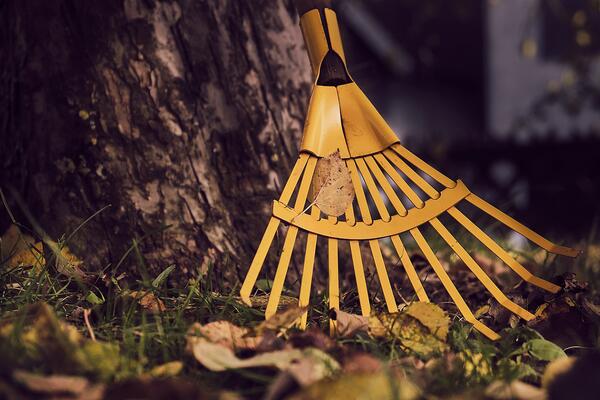
URBANA, Ill. — Pollinators are important to the global food supply and local ecosystems. About 35% of food crops rely on pollinators for production, according to the U.S. Department of Agriculture. Meaning without pollinators, there would be no food. If you have enjoyed an apple this fall or a tomato this summer, thank a bee.
Honeybees are the most recognized pollinators, but insects like moths, butterflies, wasps, beetles, and flies are also frequent pollinators. There are many species of native bees in Illinois that are important to the ecosystem.
Global pollinator decline, fueled by habitat loss and climate change, is affecting local ecosystems, native plants, and the birds and animals that eat insects as a part of the food web.
Luckily, there is something that everyone can do this fall to preserve the overwintering habitat of insect pollinators. During the fall cleanup of your flower and vegetable garden, consider incorporating a few simple strategies into your garden routine.
- Leave your leaves. Instead of raking and removing the leaves from the garden, consider leaving them to provide insulation to overwintering insects. Illinois moths and butterflies will overwinter in the protected leaves, camouflaged to blend in. If that’s not an option, rake some leaves together and put them in the garden beds, where they will slowly break down and provide nutrients to your plants next season.
- Leave spent flower stems and dead plant material. Instead of cutting back flower stems to the ground, leave some standing. Pollinators rely on hollow stems for nesting and shelter. Native bees like leafcutter and mason bees lay their eggs and nest in the stems and then emerge in the spring as temperatures warm up. Butterflies also overwinter as pupae that attach to dry stems. Keep seed heads on some plants like native grasses, sunflowers, and coneflowers to add winter interest to your garden. They also provide food and hiding spots for birds and wildlife during the cold winter months.
- Create a brush pile. Instead of bagging up fallen branches or leaves, create a brush pile in a corner of the garden. The added insulation and protected space are great for bees and butterflies.
- Leave some bare ground. Some gardeners might feel the urge to entirely cover the bare ground with mulch or leaves for the winter. About 70% of Illinois native bees are solitary, and many build their nests in the ground. Small holes in a sunny spot in the garden might not be an ant hill; it could be a bee nest. Layers of mulch prevent bees from nesting, so leaving some open bare ground allows it.
If pest or disease problems are present in the perennial or vegetable garden this year, it is best to clean up that plant debris to prevent those nuisance organisms from overwintering.
Learn more about supporting pollinators at go.illinois.edu/IllinoisPollinators. For more information on fall cleanup techniques for your gardens, connect with a local Extension office at go.illinois.edu/ExtensionOffice.
Gemini Bhalsod is an Illinois Extension horticulture educator for Cook County. Gardeners Corner is a quarterly newsletter from gardening experts around the state. Each issue highlights best practices that will make your houseplants, landscape, or garden shine in any season. Join the Gardener’s Corner email list at go.illinois.edu/GCsubscribe for direct access to timely tips.
PHOTO CAPTION: During the fall cleanup of your flower and vegetable garden, consider incorporating a few simple strategies into your garden routine, like creating a brush pile and leaving behind fallen leaves.
PHOTO CREDIT: Daniel Kirsch from Pixabay.
Illinois Extension leads public outreach for University of Illinois by translating research into action plans that allow Illinois families, businesses, and community leaders to solve problems, make informed decisions, and adapt to changes and opportunities. Illinois Extension is part of the University of Illinois Urbana-Champaign College of Agricultural, Consumer and Environmental Sciences.